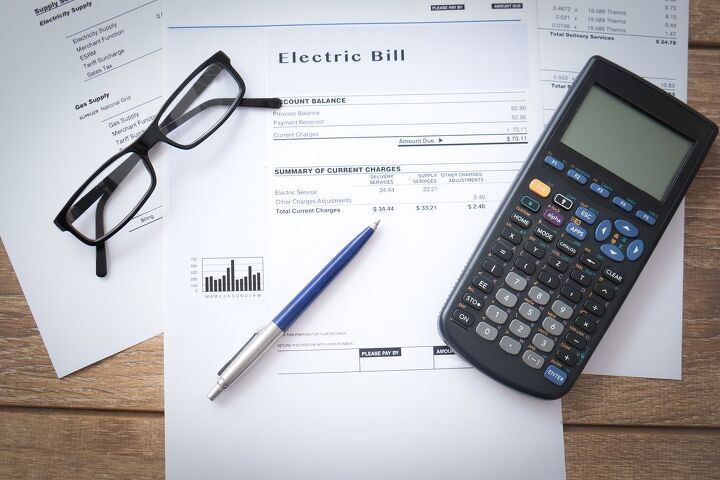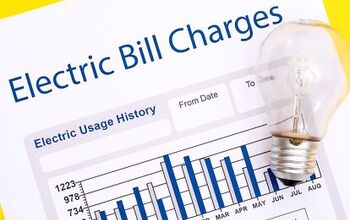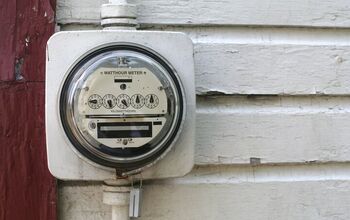How To Reduce Your Electric Bill

The shock of a massive electric bill is enough to make any homeowner want to curb their energy consumption. Whether it be in the dead heat of summer or the harsh cold of winter, you can’t simply go without heating or cooling. Luckily, there are some great ways to reduce your electric bill and save energy.
The best way to reduce your electric bill is to use your thermostat wisely and run it at 78 degrees during the summer. You can save money if you supplement your air conditioner with fans, as they only cost one cent per hour to run in most cases. Unplug unused appliances, install smart plugs, and use smart LED bulbs to save hundreds of dollars per year on your electric bill.
Simple options like hand-drying dishes and air-drying clothes can also help you save a fortune each year. Follow along as we explore how to reduce your electric bill and save money each month!
What Runs Your Electric Bill Up The Most?
Heating and cooling run your electric bill up the most. They account for up to 50% of your total monthly energy consumption. Your water heater and the lights in your home are the other biggest electricity consumers that lead to expensive energy bills.
Appliances like dishwashers, washers and dryers make up 2%-5% of your electric bill each month. Refer to the energy guide labels on your appliances to see which ones use the most energy.
How To Lower Your Electric Bill
1. Use Your Thermostat Carefully
While it may be tempting to crank the heat up in the winter or run the AC on hot days, it’s important to use your thermostat carefully. Heating your home is more expensive than cooling it because of the electrical demand and the cost of gas. Running an AC is quite expensive as well, but you can use several hacks so your AC won't have to work as hard.
For example, improving your insulation and covering your windows will put less of a demand on your air conditioner. You won’t have to turn the thermostat down as much if the sun doesn’t beam through your windows and heat your house.
Ideally, you should set your thermostat to 78 degrees Fahrenheit on hot days to keep your home comfortable to avoid getting a huge electric bill. With that said, it’s cheaper to leave your AC running than to regularly turn it on and off.
2. Hand Wash Dishes When Possible
Whenever possible, try to hand wash your dishes. You should use your dishwasher a lot of the time, as it uses less water than hand-washing, but dishwashers consume lots of electricity. Try to hand wash small dishes like plates and silverware and save your dishwasher for big loads.
3. Run Fans
Running fans is less expensive than running an air conditioner all day, and it’s a great way to reduce your electric bill. For example, it typically only costs one cent per hour to run a standard ceiling fan. You can also use box fans, tower fans, and pedestal fans to cool several rooms throughout your home.
It typically costs $165 or more per month to cool your house with an air conditioner. However, it can cost as little as $7 per fan to cool your house each month if you run it for 24 hours.
4. Air Dry Dishes
Dishwashers are great for conserving water compared to hand-washing them, but they use lots of energy. However, it’s the drying cycle that consumes the most energy when it comes to dishwashers. The heated drying cycle on many dishwashers takes up to 30 minutes.
This process includes generating enough heat to dry your dishes, and that consumes lots of energy. The California Energy Commission states that you can lower your dishwasher’s energy consumption by up to 50% if you air-dry your dishes. It only takes 1-2 hours to air dry your dishes, and it’s worth the time for the savings.
5. Improve Insulation
A well-insulated home can save homeowners a fortune on energy bills. Insulation helps keep your home at a comfortable, consistent temperature. You can save up to 15% on your heating and cooling bills if your home is well-insulated.
This accounts for 11% of your energy expenses, and it can make a huge difference. Foam and fiberglass insulation typically costs between $0.40 and $1.50 per square foot. You can expect to save at least $200 per year on energy bills if you have insulation in your home.
6. Use LED Bulbs
LED bulbs are a great way to save money and illuminate your home. They last up to 25 times longer than standard bulbs, and they consume 90% less energy. This makes them better for the environment and much cheaper for homeowners.
Smart LED bulbs are particularly useful for saving on your electrical bill. You can program smart bulbs to turn on and off at certain times of the day. Homeowners can sync their phones with smart bulbs and turn them off remotely as well, which makes it easy and convenient to reduce your energy consumption.
7. Smart Plugs
Smart plugs save energy and money when you use them wisely. You simply plug them into an outlet and plug your electrical devices into them. From there, you can control the smart plug with an app to turn them on and off.
They do consume energy when plugged in even when they’re turned off. However, they don’t consume as much energy as leaving appliances plugged in. Smart plugs only cost $25 and they’re worth every penny for the convenience and savings they offer.
8. Air Dry Your Clothes
We all know that dryers can shrink your clothes, but they can also inflate your electric bill. It can take anywhere from 15 to 45 minutes or more to dry your clothes in a dryer. Depending on how many people live in your household, you may have to run your dryer for several hours per week.
This costs a small fortune and can increase your electric bill by 10%-20% per week. Not only will you save money if you air dry your clothes, but you can also help protect your favorite outfits. Dryers can damage the fibers in many clothes, leading to shrinkage, rips, and discoloration.
9. Unplug Unnecessary Devices
Electric devices consume energy when plugged in even if you don’t turn them on. Of course, they don’t consume as much energy as they would when you run them, but it all adds up quickly. For example, laptop chargers, coffee makers, TVs, blenders, and fans use electricity when plugged in whether they’re on or not.
These are known as “vampire devices” because they suck energy and money. You can save up to $200 per year on electric bills if you unplug devices that you aren’t using.
10. Install a Smart Thermostat
Smart thermostats are far from a new phenomenon, but more people would use them if they knew how much they could reduce their electric bill. The average homeowner saves at least $150 per year with smart thermostats, but you can save much more. This is especially true if you live in a climate with cold winters and hot summers.
Smart thermostats typically provide a 15% reduction in cooling costs and a 12% reduction in heating costs. They often feature “eco” settings that automatically adapt to temperature changes to consume less energy. Brands like Nest, Ecobee, and WYZE are great options for smart thermostats.
Summing It Up
You can reduce your electric bill by keeping your thermostat at 78 degrees during the summer and running your heat sparingly. Use fans instead of the AC on days that aren’t too hot to save money. It also helps to unplug devices that you aren’t using, use smart plugs, and install LED bulbs and smart thermostats to reduce your energy consumption.
Related Guides

Nick Durante is a professional writer with a primary focus on home improvement. When he is not writing about home improvement or taking on projects around the house, he likes to read and create art. He is always looking towards the newest trends in home improvement.
More by Nick Durante



























